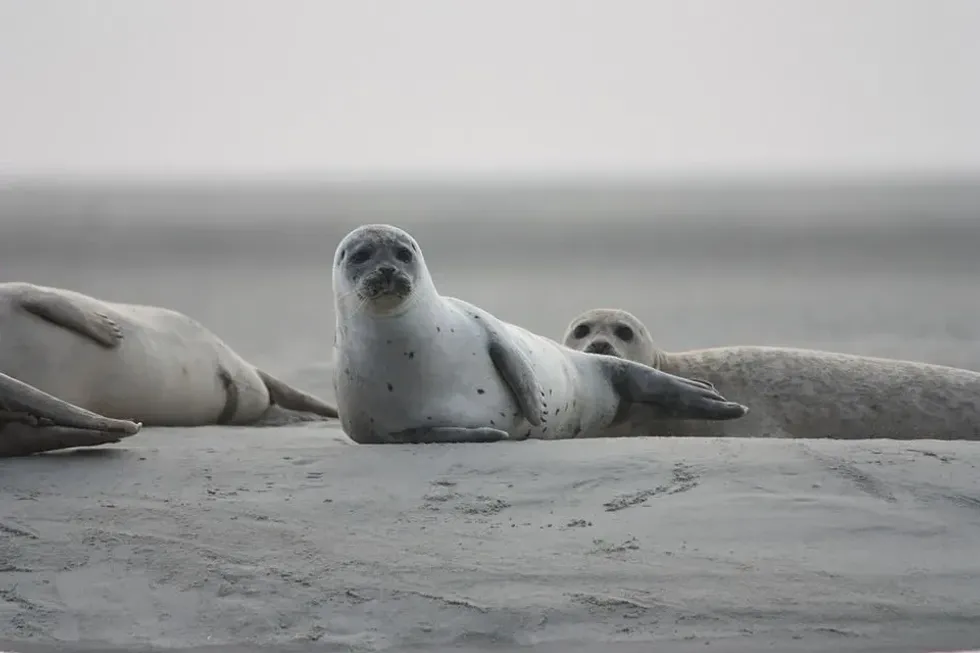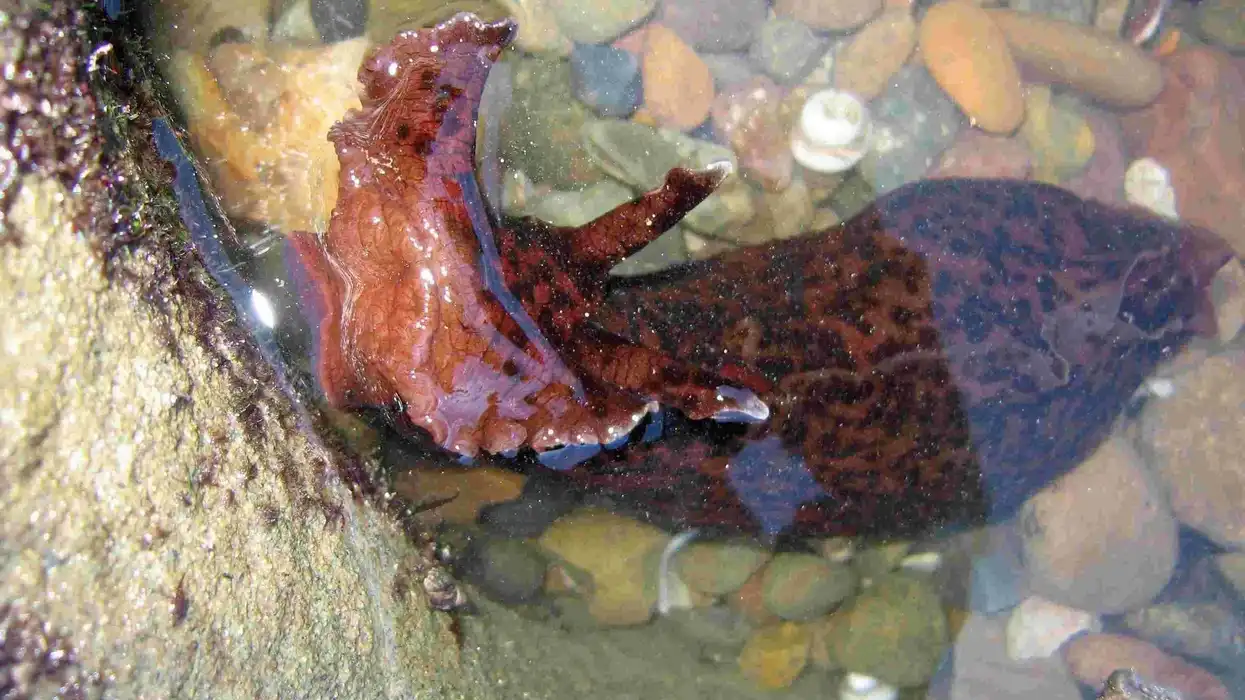Seals (family Phocidae) are more commonly known as Pinnipeds. They are distributed widely and have a diverse clade of carnivorous, fin-footed, marine mammals that are semiaquatic.
There are around 33 species that are extant of the seals and around 50 species that have been described from fossils. They differ in size and weight according to the different types of species. Some of the most widely found seal sub-species are leopard seal, elephant seal, baby seal, harp seal, Arctic seal and several others.
Their four limbs are modified into flippers, and they have streamlined bodies. They are not as fast as dolphins, but they have bodies that are more flexible and agile.
Fur seals are known to have senses that are very well developed, and their eyesight and hearing are adapted to both air and water.
Their body has a layer of fat which helps them in the cold water. They prefer to spend most of their time in the water and come ashore to mate, give birth or molt and escape from their predators.
Here are some interesting seal facts for you. After reading these seal animal facts, do check out our other articles on leopard seal and water vole.
Seal Interesting Facts
What type of animal is a seal?
Seal is a type of semi-aquatic marine mammal. They belong to a group called pinnipeds which means they are fin-footed.
Fur seals are known to be an important source of food for predators that are large in size, such as polar bears, orcas, and sharks. Fur seals are fat as they have a layer of subcutaneous fat, known as blubber, which helps them to stay protected during the winter and keep them warm.
This blubber also provides energy and nourishment.
What class of animal does a seal belong to?
Seals belong to the class of mammals. Fur seals are amphibians that stay in the water as well as on the land.
Seals are also known as earless seals, eared seals, and crawling seals. Seals are spread over a large part of the world but they mostly prefer to live in the cold waters. The meat, blubber, and fur of the seals are widely used by the Indigenous people of the Arctic.
The seals are depicted worldwide in many different cultures, accordingly. Seals are known to be kept in captivity and they are also made to perform tricks and tasks which are sometimes taught to them.
How many seals are there in the world?
According to IUCN, there are around 2 to 75 million individual seals that are there in the world as there are different species of seals. Though there are some threats to the fur seals, they give birth to new pups frequently, which is why the number of seals is not declining.
Where does a seal live?
Harp seal habitats are coastal regions and in the cold waters, and most of the fur seals live in the Arctic and Antarctic waters. They only go ashore to mate, give birth, molt or escape from their predators and protect themselves.
They also live on land as they are adapted to live both in water as well as on land.
What is a seal's habitat?
A seal’s habitat consists of coastal regions and cold waters. The pinnipeds also live on land as they are adapted to live in both conditions.
Who do seals live with?
Seals are solitary creatures and prefer to live alone rather than living in groups with other fur seals. They only come together during the mating process and to give birth to the pup. They like to stay alone rather than staying in groups with the other types of seals.
How long does a seal live?
The lifespan of a seal is 30 years depending on the environmental factors, surroundings, weather conditions, nutrition and food, and also health conditions. Gray and common seals are known to live for more than 30 years.
How do they reproduce?
As seals belong to the class of mammals, their reproduction process is just like that of human beings. Male seals try to initiate their behavior of mating by chasing the female.
They bite their neck and flipper to which the females respond by growling and waving their flipper. The copulation then takes place in the water.
The females have eggs that are inside their uterus, and there is a fluid that protects the egg. Once the eggs are fertilized, then a baby seal, known as the pup, is formed over a time period of nine to 11 months.
What is their conservation status?
The conservation status of seals is Not Extinct as there are many species of seals that give birth to pups quite frequently, and so it is believed that their numbers are not declining. Some of the species of seals are protected under the Marine Mammal Protection Act, as it is necessary to protect them before their numbers decline.
Seal Fun Facts
What do seals look like?
Seals are creatures that have feet that are shaped like fins. Their body is structured in a way that it has smooth, and torso that is shaped like a torpedo, and is flattened and has flippers that are powerful which help them to run.
How cute are they?
Seals are very cute because of their face structure and are very adorable as well. They are friendly in nature with their caretakers and wildlife experts. They have eyes that are round and are front-directed which makes them look cuter.
How do they communicate?
Seals communicate with each other with the use of their throat and air. The pitch and the range of the noises that they make vary and come in different forms. They send whistles that are long and low underwater, which have very high levels of decibel, and the harbor seals are the ones who make quiet calls.
How big is a seal?
The size of seals varies from one species to another. The average seal size is 73 in (6.1 ft), and these sea mammals are big in size when compared to other species. They are also very heavy as 50 percent of thier bodyweight consists of blubber.
How fast can a seal move?
Seals can race up to 22 mph (35 kmph) and swim faster when they see predators approaching them. Seals can move up to 13 mph (20 kmph) when they are on land.
How much does a seal weigh?
The weight of the seal varies from one species to another. The average weight of the seal is 132 lb (59 kg) and increases according to the different species of eels according to their size.
What are the male and female names of the species?
A male seal is known as a bull, and a female seal is known as a cow.
What would you call a baby seal?
A baby seal is called a pup.
What do they eat?
Elephant seal diet, and diet of other subspecies, primarily comprises of fish that are caught by them in the sea. Some of the species of seals also eat penguins and other seals. They eat squid, crustaceans, mollusks, rockfish, herring, flounder, salmon, hake, and sand lance.
Are they dangerous?
Yes, seals are known to be very dangerous creatures. They can bite and transfer serious infections to you or to your pet. It is very rare that seals attack humans, but it is advisable that humans should stay away from seals as they can also transmit some viruses such as herpes.
Would they make a good pet?
No, seals are wild animals, and one should not keep these as a pet. You cannot keep a seal as a pet since there is a law against having marine mammals as pets in your house.
It would also be very difficult to have seals in your house as pets, because they need a lot of space, water and food.
Did you know...
Seals are known to have whiskers which help them to detect the prey in the waters which are dark and murky. Females live a longer life than that of the male seals. Seals sleep underwater as they spend most of their time living underwater. Seals are very intelligent creatures and learn tricks very quickly.
Seals can hold their breath underwater for two hours as they have the habit of living underwater. There are 33 types of seals that are spread all across the world. Even though some seals are named earless seals, they do have ears. There is a unique call that helps the pup and the mother bond with each other.
These majestic animals have a city named after them as well. Seal Beach City has been named after the seals that used to frequent its beaches.
What are seals known for?
Seals are popularly known for the layer of fat under their skin that is called blubber which helps them to keep warm in the cold waters.
Are seals friendly?
Yes, seals are friendly in nature and form social attachments with their caretakers and the experts in the field of wildlife. But, as seals are wild animals, there is a chance that they may become aggressive and injure you. So, it is advised that humans should stay away from seals as they can harm you.
Here at Kidadl, we have carefully created lots of interesting family-friendly animal facts for everyone to discover! Learn more about some other mammals including harp seal, or harbor seals.
You can even occupy yourself at home by drawing one of our baby seal coloring pages.










